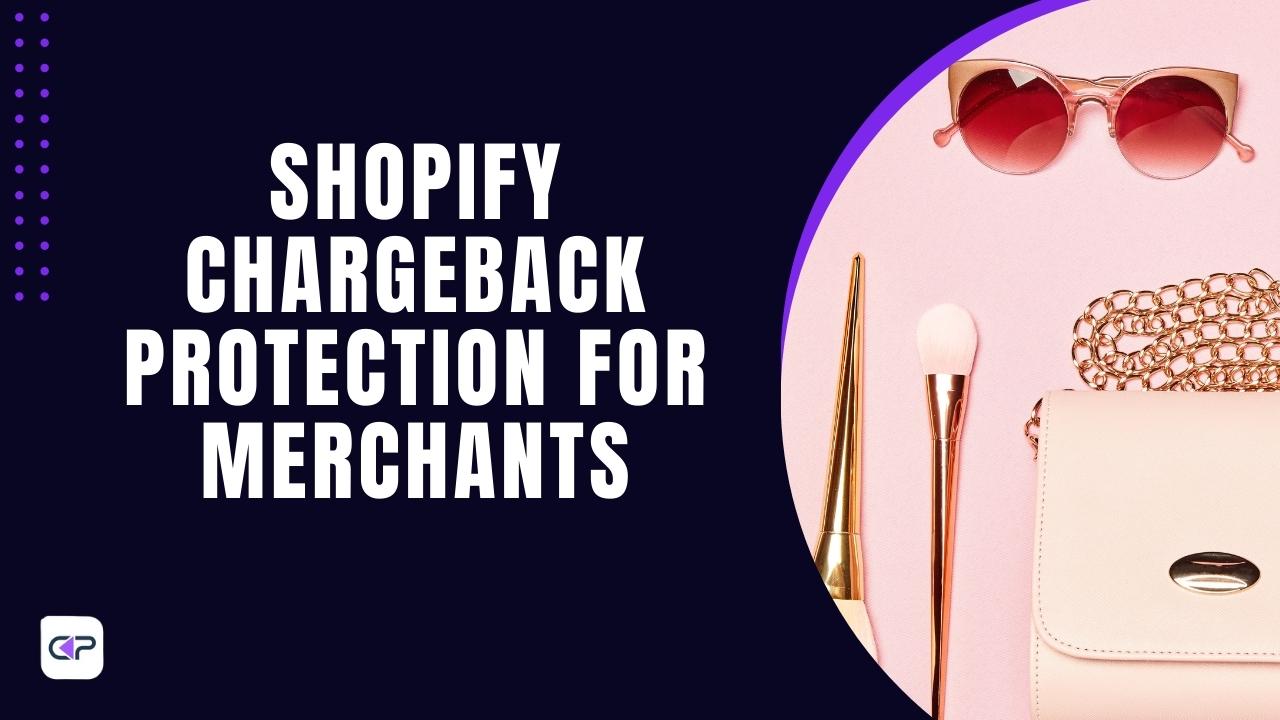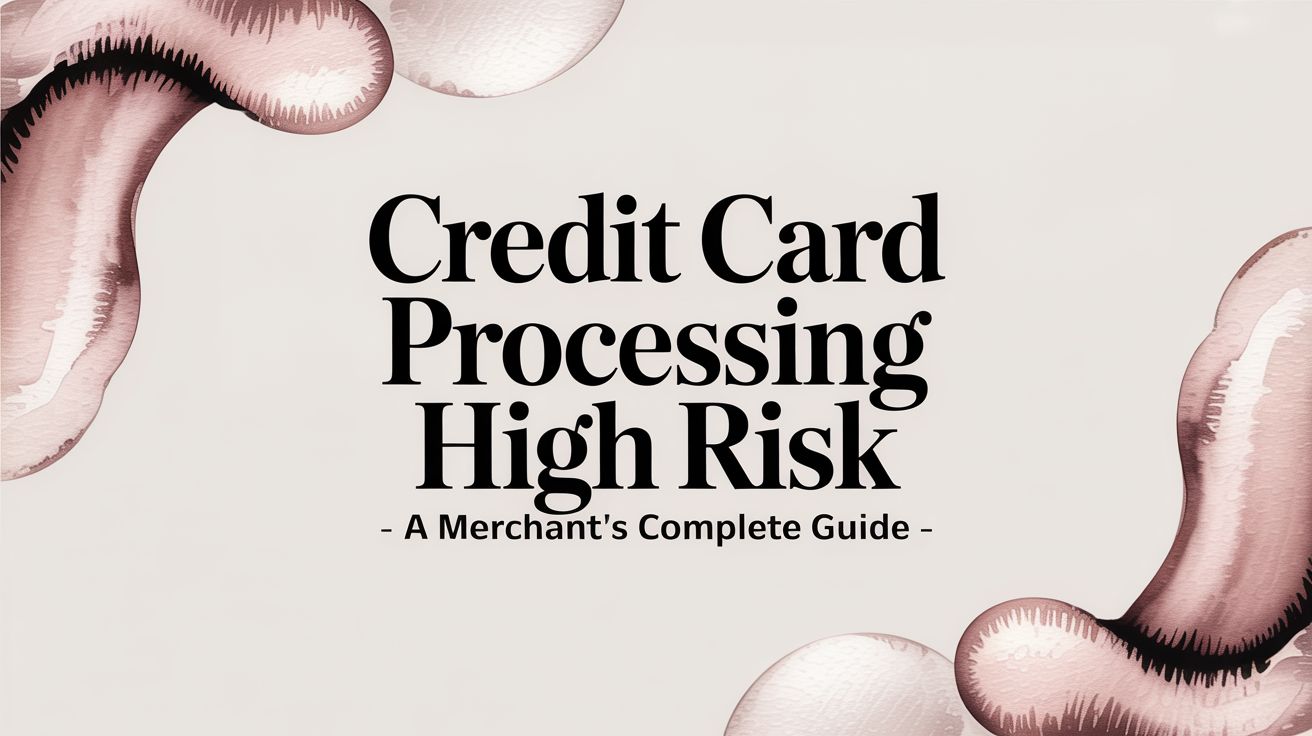
Are chargebacks cutting into your Shopify store’s profits?
In e-commerce, disputes and chargebacks are an inevitable challenge, and with Shopify’s high transaction volumes, the risk of these financial setbacks grows.
Shopify’s accessible platform has become a cornerstone for countless businesses, handling an impressive $75.1 billion in gross merchandise volume as of the latest quarter.
However, as transaction numbers increase, so do disputes, posing a challenge for merchants who must find effective ways to protect their revenue.
This guide offers expert tips and strategies to help you strengthen your Shopify chargeback protection, minimize losses, and ensure smoother operations for your online business.
What is a Shopify Chargeback Protection?
Shopify Chargeback Protection is a service designed to help merchants safeguard their revenue from fraudulent chargebacks by covering specific types of high-risk transactions. This tool monitors transactions made through Shopify Payments, using fraud detection technologies to assess the risk of chargebacks on each order.
When a qualifying transaction is identified, Shopify covers the chargeback amount, shielding the merchant from potential revenue loss.
This protection is particularly beneficial for Shopify merchants, as chargebacks can impact revenue and disrupt cash flow, especially for businesses handling a high volume of transactions.
By automatically applying protection to eligible orders, Shopify Chargeback Protection helps merchants manage risks without needing to evaluate every order manually.
Does Shopify Offer and Dispute Protection?
Shopify offers partial dispute protection, primarily through its integration with Shopify Payments. This protection covers specific fraud-based chargebacks on eligible transactions. If an order is identified as high-risk and later results in a fraudulent chargeback, Shopify may reimburse the transaction amount to the merchant.
However, this service does not cover chargebacks related to customer disputes, such as delivery issues or product dissatisfaction.
Shopify also provides tools within the platform to help merchants monitor orders efficiently. These tools include transaction analysis, fraud detection alerts, and guidance on handling non-fraud chargebacks.
While Shopify’s dispute protection has limits, it enables merchants to address and protect disputes more effectively, helping them reduce the overall impact of chargebacks on their business.
6 Tips for Shopify Chargeback Protection
To effectively protect chargebacks on Shopify, merchants need to implement specific strategies that target common chargeback triggers.
Below are six topic-driven, current tips designed to help Shopify businesses strengthen chargeback protection.
1. Enable Chargeback Protection for Eligible Orders by Shopify
Start by enabling Chargeback Protection through Shopify Payments, which automatically covers specific high-risk orders against fraudulent chargebacks. Shopify’s protection automatically applies to eligible transactions, covering chargebacks that meet the program’s criteria.
Merchants should regularly review their settings in Shopify Payments to ensure all eligible transactions receive coverage, maximizing protection and reducing chargeback-associated losses.
2. Set Up Advanced Dispute Detection Alerts
Shopify Payments includes built-in fraud detection that flags potentially risky orders, but merchants must enhance this by using third-party dispute protection apps like ChargePay, which integrate seamlessly with Shopify.
This tool provides detailed fraud screening, which alerts merchants to suspicious behaviors, such as multiple failed payment attempts, unusual IP addresses, or mismatched shipping and billing information.
Customizing dispute detection alerts to match your business's risk profile helps prevent fraudulent transactions before they lead to chargebacks.
3. Implement Clear and Accurate Product Descriptions
Product-related disputes, such as “Item Not as Described” or “Unsatisfactory Product Quality,” contribute to a significant portion of chargebacks.
To protect these, provide detailed, accurate descriptions, high-quality images, and even videos that showcase the product.
Clarify any aspects that could influence buyer satisfaction, like sizing, color variations, or assembly instructions.
Merchants should also use customer reviews to reinforce transparency and improve customer trust, reducing product-related disputes.
4. Maintain Prompt and Transparent Communication with Customers
Customer satisfaction is crucial in preventing disputes that escalate into chargebacks. Automate confirmation emails, shipping updates, and delivery notifications to keep customers informed at every purchase stage.
Additionally, establish a clear and accessible refund and exchange policy that customers can refer to, minimizing misunderstandings that could lead to chargebacks.

5. Collect and Document Evidence for Disputes in Real-Time
If a chargeback does occur, responding promptly with clear evidence is essential. Shopify provides merchants with tools to gather necessary documentation, including order details, customer communications, and tracking numbers.
Merchants can strengthen their case by including photos of the item before shipment and proof of delivery.
Using tools like ChargePay for automatic documentation will streamline dispute responses, maximizing the chances of winning.
6. Analyze Chargeback Data to Identify Recurring Issues
Tracking and analyzing chargeback data reveals patterns that help protect future disputes. Shopify’s analytics provide insights into order trends, customer behaviors, and common chargeback reasons.
By reviewing chargeback data, merchants identify the most frequent chargeback sources and adjust their policies, improve product listings, or modify customer service practices accordingly.
Using a platform like ChargePay provides advanced analytics that streamline this process and help pinpoint areas for improvement.
Each of these tips directly addresses common chargeback issues on Shopify, equipping merchants with specific strategies for reducing chargeback rates, maintaining payment processor health, and safeguarding revenue.
Protecting Different Chargebacks on Shopify
Understanding and addressing specific types of chargebacks helps Shopify merchants build a targeted approach to minimize disputes and protect revenue.
1. Fraudulent Chargebacks
To prevent fraudulent chargebacks, use Shopify’s built-in fraud detection tools and consider third-party fraud prevention apps to flag high-risk transactions. Enable Shopify Chargeback Protection for eligible orders to reduce losses from confirmed fraud.
2. Unrecognized Transaction Chargebacks
Customers sometimes fail to recognize transactions on their statements. To prevent this, ensure that your business name matches your store’s branding. Sending detailed confirmation emails and transaction receipts can also help clarify purchases.
3. Duplicate Purchase Chargebacks
Duplicate purchases can lead to chargebacks if customers mistakenly place an order twice. Implement cart controls that notify users of potential duplicates, and clearly state refund policies to address these errors proactively.
4. Recurring Payment Chargebacks
Recurring chargebacks often stem from customer misunderstandings about subscription terms. Clearly outline subscription renewal policies and send reminders before billing cycles. Shopify apps like Recharge can assist with managing subscriptions transparently.
5. Product Not Received Chargebacks
Tracking shipments is essential to avoid these chargebacks. Always provide customers with tracking numbers and send delivery updates. For delayed shipments, proactive communication and flexible resolution options can reduce customer frustrations.
6. Product Unacceptable Chargebacks
Dissatisfaction due to product quality can result in chargebacks. Use accurate product descriptions and high-quality images, and offer hassle-free return policies to improve customer satisfaction and reduce disputes.
7. Credit Not Processed Disputes
These chargebacks arise when customers don’t receive expected refunds. Process returns and refunds promptly, and notify customers when refunds are issued. Offering clear guidelines on refund timelines can set the right expectations.
By understanding these chargeback types, merchants can take specific actions to prevent them, enhancing both customer satisfaction and business profitability on Shopify.
Automated Shopify Chargeback Protection with ChargePay
ChargePay simplifies and strengthens chargeback protection on Shopify by using AI-driven fraud detection and automated dispute resolution.
With ChargePay’s advanced algorithms, merchants identify and block high-risk transactions in real-time, reducing chargeback rates and safeguarding revenue.
The platform also automates the entire chargeback response process—from gathering evidence to submitting disputes—saving businesses time and improving win rates for disputed charges.
By integrating ChargePay with Shopify, merchants gain access to a powerful toolset designed to protect their bottom line with minimal manual effort.
Ready to protect your Shopify store from chargebacks?
Install the ChargePay app today and take control of your chargeback management.







.svg)







.svg)
.svg)
.svg)